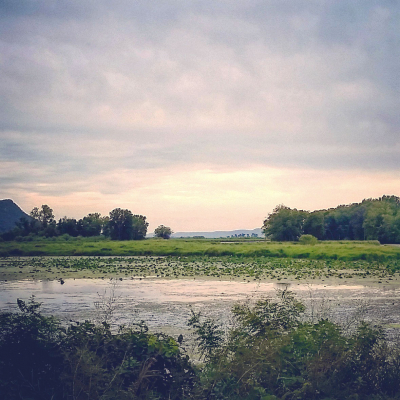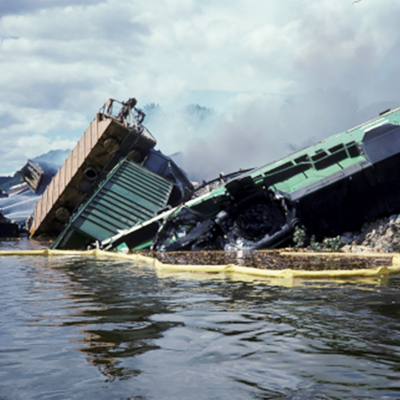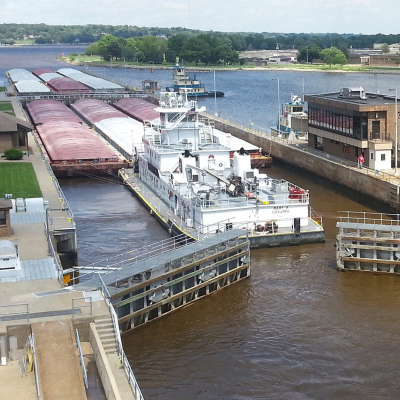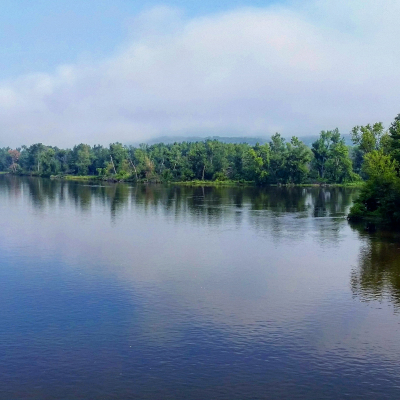The Upper Mississippi is an ecological treasure, serving as a home to iconic fish, birds, and wildlife
The Upper Mississippi River is a large, complex floodplain ecosystem that is historically characterized as a rich mosaic of braided channels that flowed past countless islands and through abundant lakes and wetlands where diverse riparian plant communities flourished. The river is home to a highly diverse set of fish, birds, mussels, reptiles, amphibians, and mammals, including a number of rare and endangered species. Over 318,750 acres of the river-floodplain are designated as Wetlands of International Importance in addition to side channels, sloughs, and oxbows.
The Upper Mississippi supports a $55 billion tourism and recreation industry built upon the serenity and adventure of the river’s landscape and abundant opportunities for fishing and hunting. The river's ecological processes and functions provides tremendous economic and social benefits locally, regionally, and nationally, notably clean water for public and industrial use.
Even though the river retains important elements of its pre-disturbance ecological structure and function, it has been dramatically altered and continues to degrade every year. The construction and operation of the 9-foot navigation channel, as well as land use changes in the watershed and floodplain, inundated much of the original floodplain forest or significantly restricted the lateral floodplain. Many of the natural islands are gone, allowing stronger waves to further reduce habitat availability and quality. Levees and other structures disconnect the main channel from the river’s floodplain habitat and filtering capacities. Sediment is filling in wetlands, lakes, and channels, and excess nutrients are depleting the water of oxygen needed for fish. And in some areas of the river, invasive species outcompete native fish and wildlife for food sources and limited habitat. At the same time, and in large part due to UMRR and the integrated nature of river management, many areas of the river still retain many of their natural floodplain ecosystem characteristics such as flood pulses.
Key Documents and Links
Topic-Specific Internal Links
UMRBA Statements
Priority Solutions
It is UMRBA’s position that the investment in improving the river ecosystem must be accelerated until such time that it is resilient in a healthy, thriving condition. UMRBA both advocates for, and participates in planning related to, UMRR and the Navigation and Ecosystem Sustainability Program (NESP). UMRBA is also working with partners to restore low water variability through pool-level management for the purposes of facilitating sediment compaction and vegetation growth.
Implement UMRR's habitat restoration and monitoring strategies
UMRR is a unique, dynamic, collaborative, science-based restoration program that is addressing key habitat needs at various spatial scales and improving the river’s overall health and resilience to stressors. Congress permanently authorized UMRR, which is now an international leader and pioneer in large-river restoration and science. Its habitat projects allow the river to mimic natural processes and restore mosaics of wetlands, channels, and forests. Its long term monitoring allows for making scientific conclusions about management techniques, cyclical changes in important ecological components, and the status and trends of indicators used for analyzing relationships among components.
Advance NESP's ecological integrity solutions
NESP offers a comprehensive and integrated plan for meeting current and future shipping demands, stimulating economic growth, and improving the health and resilience of the river ecosystem. NESP’s authorization includes $1.717 billion for a 15-year effort to restore the river’s ecological integrity and ability to support fish and wildlife plus $10.42 million annually for monitoring. NESP will improve the structure and dynamic processes of the ecosystem by reconnecting side channels to the river, restoring fish habitat, rebuilding islands, reforesting lands, protecting shorelines from erosion, and mimicking natural cycles of seasonal water levels to help vegetation thrive—all of which are compatible with navigation.
UMRBA History
Ecosystem restoration and monitoring has been a major focus for UMRBA since its inception in 1981, when advocating for authorization of the Master Plan’s recommendations was a top priority for the states. While UMRBA has contributed to many state and federal ecosystem-related efforts, its work has primarily focused on UMRR and NESP. UMRBA was integral to the programs’ authorizations and subsequent appropriations and has worked closely with partners in implementing and managing UMRR. This includes advocating for funding and authorization changes, pursuing policy and process changes within USACE, coordinating interagency implementation efforts, and providing various support services under contract with USACE. In addition, UMRBA seeks to advance other state priorities, such as operation and maintenance of the 9-foot navigation channel and water quality monitoring and assessment, in its restoration-related work. Most recently, this has included facilitating interdisciplinary and interagency discussions regarding water level management.
----
We are working on our website, and will complete this section soon. Thank you for your patience. Some of the historical references include the following:




